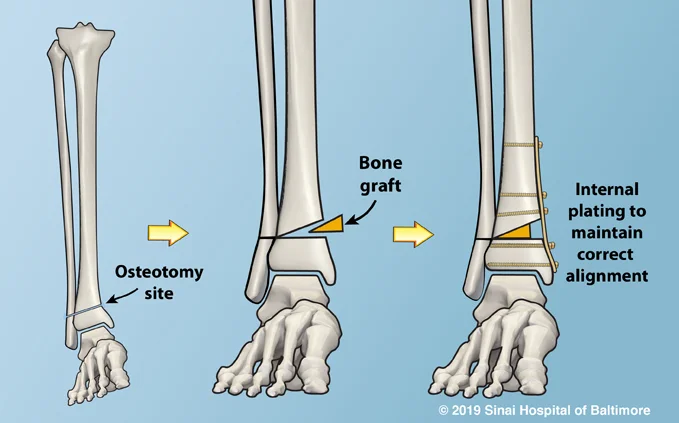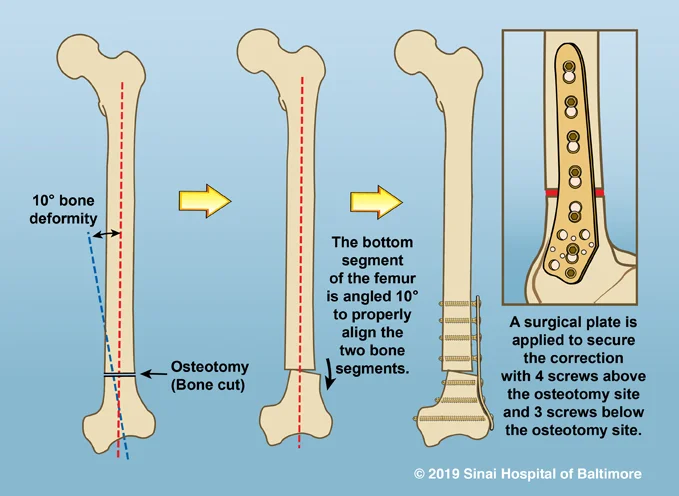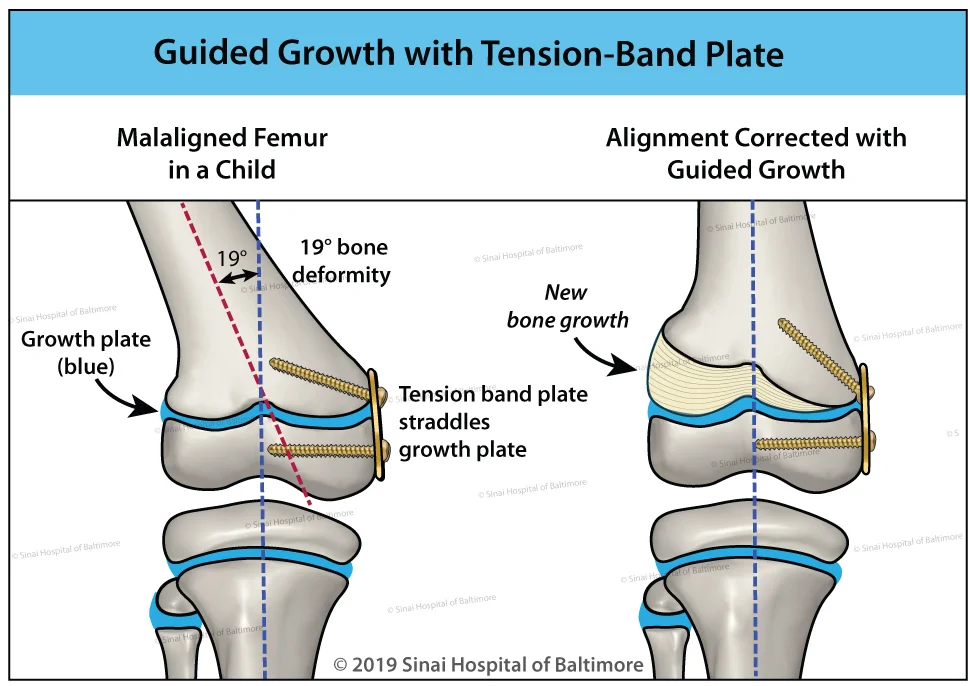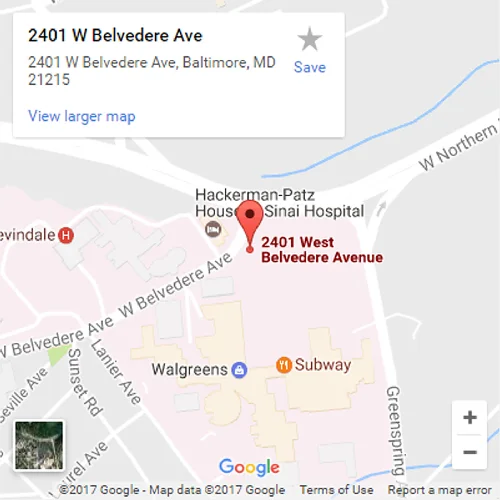Internal Fixation: Plates
What are plates?
A plate is a type of internal fixation that is attached to the bone with screws. Plates are made of surgical grade stainless steel or titanium. After treatment, plates can be removed during a surgical procedure or they can remain in place. Our doctors discuss the pros and cons about removing plates with each patient.

How are plates used?
Plates secured with multiple screws are used to hold pieces of bone together after osteotomy or fracture. Special short two-holed plates with only two screws are used to perform guided growth in children, a method that slowly corrects crooked bones through natural growth without surgically cutting the bones.
A plate can be used when crooked bones are straightened during surgery. The crooked bone is cut (osteotomy), and the two bone fragments are moved until they are correctly aligned. Then a plate can be applied to keep the bone securely held in the correct position while it heals. Applying a plate can reduce the chances of nonunion (the bone cut not healing) and malunion (the bone cut healing crooked).

A recently fractured bone (from trauma/injury) also may need to be stabilized and held in the correct position to heal. In simple fractures, this can be accomplished with a cast or splint. For complex fractures, a plate may be applied to the bone. During surgery, the bone fragments are aligned and then a plate is secured to the bone with screws. The plate keeps the bone fragments in the correct position while the bone heals. Eventually, when the bone is fully healed, the plate can be removed. If a plate is in a certain location in an adult, it may remain in place forever.
Tension-band plates (also called guided growth plates) can be used to perform guided growth in children. Tension-band plates are about the size of a paperclip and are shaped like the number eight. The most commonly used tension-band plates are the eight-Plate and the Peanut Plate. These plates gradually straighten a crooked bone as a child grows. After correction is achieved, the tension-band plate is removed during a second, outpatient surgical procedure (the patient does not stay in the hospital overnight after surgery).
Tension-band plates can also be temporarily applied to slow the longitudinal growth of the bone (slow bone growth that increases the length of the bone). This is called temporary epiphysiodesis. Our doctors consider this as an option when a child has a severe limb length discrepancy. In these situations, it may be desirable to slow the growth of the normal, longer bone to allow the shorter bone to “catch up.”

